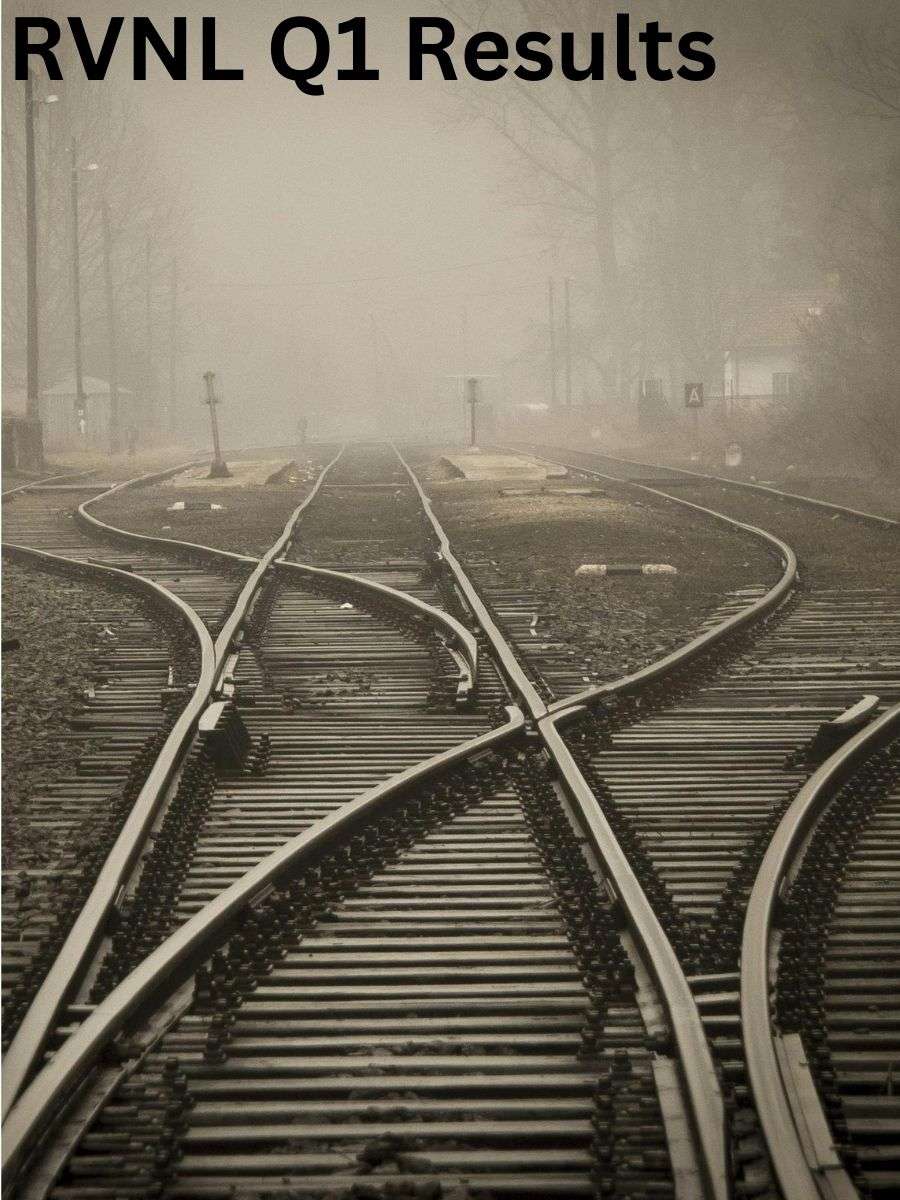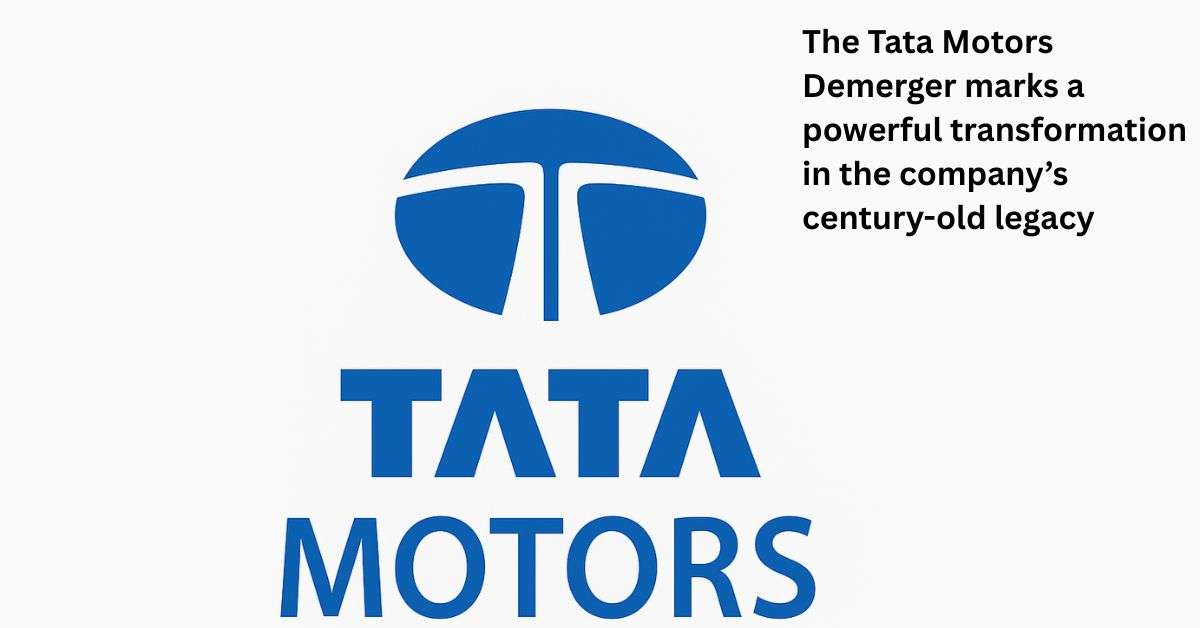Introduction
State-owned Rail Vikas Nigam Ltd (RVNL) has recently reported its RVNL Q1 Results. Stock Crashes 5% After Railway PSU Posts 35% Decline in PAT for the financial year ending June 2024, and the numbers are less than stellar. With a 35% decline in Profit After Tax (PAT), the company’s stock plummeted by over 5% to ₹537.55 during Thursday’s trading session. This sudden drop is a stark contrast to the 367% rise in RVNL’s stock over the past 12 months. So, what led to this significant decline, and what does it mean for the future of RVNL?

RVNL Q1 Results: What Led to the 35% Decline in PAT?
The sharp decline in RVNL’s consolidated net profit for Q1 2024 can be attributed primarily to a decrease in revenue from operations. Revenue dropped by 27%, reaching ₹4,074 crore, compared to ₹5,572 crore in the same period last year. This drop significantly impacted the company’s earnings before interest, taxes, depreciation, and amortization (EBITDA), which fell by 48% year-on-year to ₹189 crore. The company’s margins also declined by 180 basis points to 4.5%, further squeezing profitability.
On a sequential basis, the picture looks even more grim, with net profit decreasing by 53% from ₹478 crore reported in the previous March quarter. Revenue from operations also fell by 39% quarter-on-quarter, down from ₹6,714 crore in the March 2024 quarter.
The Stock Market’s Reaction
The market’s reaction to RVNL Q1 results was swift and unforgiving. The stock crashed by over 5%, reflecting investor disappointment. Despite this, it’s essential to note that RVNL’s stock had been on a tremendous rally over the past 12 months, surging by 367%. This dramatic rise means that the recent dip, while significant, is part of a broader trend of volatility seen in the stock market, especially in sectors heavily reliant on government contracts and infrastructure development.
Understanding the Revenue Decline
RVNL’s revenue decline during the April-June 2024 period is a critical factor behind the poor RVNL Q1 results performance. The 27% drop in revenue from ₹5,572 crore to ₹4,074 crore can be attributed to several sector-specific challenges, including delays in project execution and financial constraints within the broader economy. Additionally, the external environment, marked by rising interest rates and inflationary pressures, has dampened demand for new infrastructure projects, directly impacting RVNL’s order book and revenue generation.
EBITDA and Margin Decline: A Closer Look
The 48% drop in EBITDA from ₹349 crore to ₹189 crore is a significant concern for RVNL. EBITDA serves as a key indicator of a company’s operating performance, and such a steep decline suggests underlying inefficiencies or challenges. The reduction in margins by 180 basis points to 4.5% further highlights the pressure on RVNL’s profitability. When compared to competitors in the railway and infrastructure sectors, RVNL’s margins appear to be under more stress, possibly due to higher operational costs or delayed payments from clients.
Sequential Analysis: March vs. June 2024
When comparing RVNL’s performance from Q4 to Q1, the figures are alarming. Net profit has plunged by 53%, and revenue has fallen by 39%. This sequential decline indicates not just a challenging quarter but potentially deeper issues in project execution or financial management. The reduction in finance costs to ₹137 crore from ₹146 crore in the previous year’s quarter, while positive, is not enough to offset the overall negative performance.
Expense Reduction: A Silver Lining?
Interestingly, RVNL managed to decrease its total expenses by 25% year-on-year to ₹4,036 crore in Q1 2024. While this cost reduction could be seen as a positive sign of improved efficiency, it might also indicate aggressive cost-cutting measures that could impact long-term growth. The sustainability of these expense reductions is questionable, especially if they result in delayed project timelines or reduced project quality.
RVNL’s Strategic Focus
Despite the recent setbacks, RVNL remains focused on its primary goals: rapidly implementing projects to build and enhance rail infrastructure capacity and raising extra-budgetary resources for Special Purpose Vehicle (SPV) projects. The company plays a crucial role in India’s rail infrastructure development, and its ability to mobilize financial and human resources is key to its long-term success. However, the challenges faced in Q1 2024 raise questions about the effectiveness of its current strategies.
Historical Stock Performance
RVNL’s journey since its IPO in 2019 has been remarkable. Starting at ₹19 per share, the stock has delivered consistent annual returns, culminating in a 367% surge over the past 12 months. This year’s performance has been particularly impressive, with RVNL outpacing its previous best calendar year gain of 166% in 2023. However, the recent dip following RVNL Q1 results. What the 35% PAT Decline Means for Investors serves as a reminder of the volatility and risks associated with investing in government-backed infrastructure projects.
RVNL’s Role in the Indian Economy
As a key player in India’s rail infrastructure development, RVNL contributes significantly to the national economy. The company’s projects span across various regions, and its partnerships with other public and private entities enable it to undertake large-scale infrastructure projects. Moving forward, RVNL’s ability to navigate financial and operational challenges will be critical in maintaining its role as a leader in the sector.
What’s Next for RVNL?
Looking ahead, RVNL has a robust project pipeline that could drive future growth. However, the company will need to address the challenges highlighted in RVNL Q1 results to ensure these projects are executed effectively. Management has indicated a cautious outlook for the next quarter, with a focus on improving project execution and financial performance. The success of these initiatives will determine RVNL’s ability to bounce back from the recent downturn.
Investor Perspective: Hold, Sell, or Buy?
For investors, the key question is whether to hold, sell, or buy RVNL stock post-RVNL Q1 Results. The stock’s valuation has been impacted by the recent dip, but long-term investors may see this as a buying opportunity, especially given the company’s strategic importance in India’s infrastructure development. However, short-term investors should be wary of potential volatility and may consider selling if they are risk-averse. Analysts recommend a cautious approach, with a focus on monitoring the company’s performance in the coming quarters.
The Bigger Picture: RVNL in the Indian Stock Market
RVNL’s performance must be viewed in the context of the broader Indian stock market, particularly among Public Sector Undertakings (PSUs). While the company has outperformed many of its peers over the past year, the challenges faced in RVNL Q1 results highlight the inherent risks in infrastructure-focused stocks. Investors should consider how RVNL’s performance aligns with sectoral trends and the overall economic environment.
Conclusion
RVNL Q1 results have sent shockwaves through the market, with a 35% decline in PAT leading to a 5% drop in stock price. The company faces significant challenges, including a sharp decline in revenue, EBITDA, and margins. However, its long-term prospects remain tied to its strategic focus on rail infrastructure development and raising extra-budgetary resources. Investors should carefully consider these factors when making decisions about RVNL’s stock.
FAQs
1. Why Did RVNL’s Profit Decline in RVNL Q1 Results?
RVNL Q1 Results: profit declined primarily due to a 27% drop in revenue from operations, a 48% decrease in EBITDA, and shrinking margins.
2. How Did the Stock Market React to RVNL Q1 Results?
The stock market reacted negatively, with RVNL’s stock crashing over 5% following the announcement of RVNL Q1 Results
3. What Is RVNL’s Strategic Focus Moving Forward?
RVNL is focused on accelerating rail infrastructure projects and raising extra-budgetary resources for Special Purpose Vehicle (SPV) projects.
4. Should Investors Be Concerned About RVNL’s Performance?
Investors should be cautious, as the RVNL Q1 results highlight significant challenges. However, long-term prospects may still be positive, depending on future performance.
5. What Are the Long-Term Prospects for RVNL?
The long-term prospects for RVNL depend on its ability to overcome current challenges and successfully execute its project pipeline.
Open Your Demat Account with Discount Brokers:
ZERODHA 1) : https://zerodha.com/open-account?c=EJ4366
Angelone 2) : https://tinyurl.com/2gloc3g6 or
Upstox3): https://link.upstox.com/9w4tNo1rK8au7VK47











Its like you read my mind You appear to know a lot about this like you wrote the book in it or something I think that you could do with some pics to drive the message home a little bit but instead of that this is fantastic blog An excellent read I will certainly be back